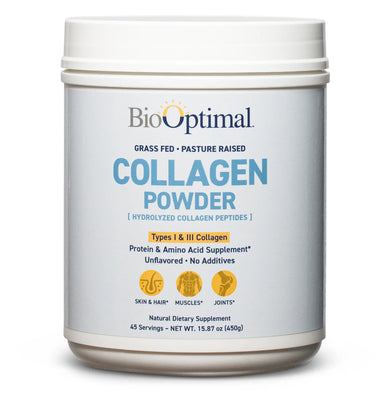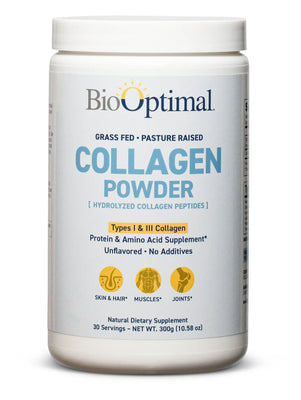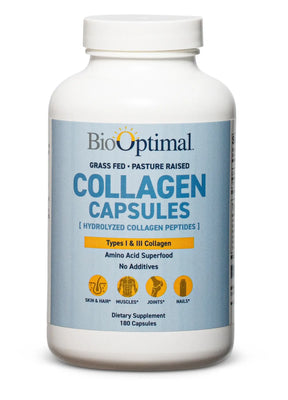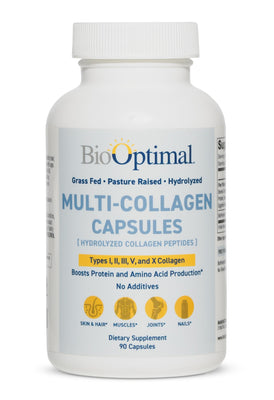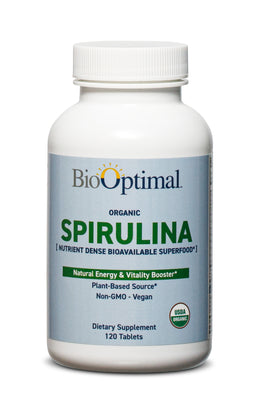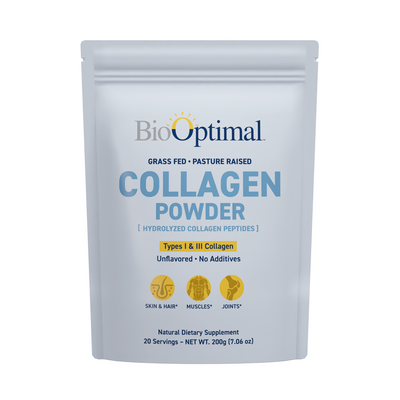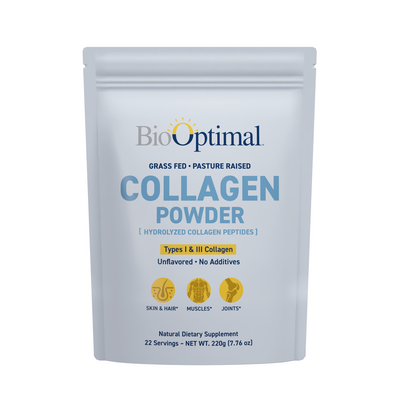Table of Contents:
Green superfood powders are a popular way to support daily nutrition, but many people forget to ask an important question: Does green superfood powder expire? The answer is yes—these powders do have a shelf life, and using past the expiration date can reduce their nutritional value or even pose health risks. Over 30% of supplement users don’t check expiration dates regularly (Consumer Lab, 2023), increasing the risk of consuming ineffective or spoiled products.
Research from the NIH shows that nutrient degradation in powdered supplements begins within 6–12 months of opening, especially if the product isn't stored correctly. Even more concerning, poor storage conditions like heat and humidity can speed up spoilage by up to three times (USDA). Understanding how long green superfood powders last and how to store them correctly is key to maintaining their safety and benefits.
1. What Is Green Superfood Powder?
Green superfood powder include dried, powdered greens and nutrient-dense plant ingredients. It typically includes leafy vegetables like spinach and kale, grasses like wheatgrass and barley grass, algae like spirulina and chlorella, and additional herbs, fruits, or probiotics. These powders are designed to provide convenient access to vitamins, minerals, antioxidants, and other phytonutrients found in whole foods. You can mix them into water, smoothies, or juice to help fill nutritional gaps in your diet. They're handy for people with busy lifestyles or struggling to eat enough vegetables daily.
Key Nutrients and Ingredients
Green superfood powders combine various whole-food sources to deliver essential nutrients your body needs. Common ingredients include:
- Leafy greens (kale, spinach): High in vitamins A, C, and K.
- Algae (spirulina, chlorella): Rich in protein, iron, and B vitamins.
- Grasses (wheatgrass, barley grass): Contain chlorophyll, fiber, and antioxidants.
- Fruits and vegetables (carrot, beet, blueberry): Add natural flavor and extra phytonutrients.
- Probiotics and enzymes: Support gut health and digestion.
- Herbs and adaptogens (ashwagandha, turmeric): May support stress response and inflammation.
These blends are formulated to promote energy, immune function, and overall well-being. The nutrient variety also helps fill dietary gaps and supports a balanced, plant-rich diet.
Popular Uses and Benefits
Green superfood powder is widely used daily to boost overall nutrition. Mix it into smoothies, juices, or water to create an easy, nutrient-rich drink. It benefits those with busy schedules, limited access to fresh produce, or increased nutrient needs.
Key benefits include:
- Convenient nutrient intake when fruits and vegetables are lacking.
- Supports immune health through antioxidants and vitamins like C and E.
- Promotes digestion with added fiber, probiotics, and digestive enzymes.
- Increases energy naturally, thanks to B vitamins and iron-rich greens.
- Aids detoxification, primarily through ingredients like chlorella and spirulina.
While not a substitute for whole foods, green superfood powder can be a practical tool for supporting health goals, especially when used alongside a balanced diet.
2. Does Green Superfood Powder Expire?
Yes, green superfood powder does expire. Like any food product, it has a limited shelf life and can lose potency or spoil over time. Most powders are safe and effective when used before their expiration or best-before date, but over time, nutrient degradation can begin as early as 6–12 months after opening (NIH). Factors such as exposure to air, moisture, and heat can speed up spoilage and reduce the product’s effectiveness. Poor storage conditions can triple the rate of spoilage (USDA). Expired powders may lose their nutritional value and develop off-odors, clumping, or even microbial growth. Always check the label before using any supplement. According to Consumer Lab (2023), more than 30% of users neglect expiration dates, which can increase health risks. To ensure safety and quality, store the powder in a cool, dry place and follow all packaging instructions.
Understanding Expiration Dates vs. Best-Before Labels
Expiration and best-before dates aren't the same. Expiration dates indicate when a product may become unsafe or ineffective, mainly if it contains active ingredients like probiotics or enzymes. After this date, the manufacturer no longer guarantees quality or safety. It may still be usable afterward, but with reduced flavor, texture, or potency. For green superfood powder, both dates matter. If the product has been opened and exposed to air or moisture, it may lose nutritional value faster, even before the date on the label.
Typical Shelf Life of Superfood Powders
Unopened green superfood powders generally have a shelf life of 1–2 years from manufacturing. Once opened, the product should be used within 3–6 months for best results, though it is usable upto 12 months with proper storage. Exposure to air, light, and humidity will shorten shelf life significantly. Products with added probiotics, enzymes, or plant oils are more prone to degradation. Always close the container tightly to maintain quality and avoid storing it near heat or moisture. When in doubt, check for changes in smell, texture, or color before use.
Manufacturer Guidelines and Seals
Most manufacturers provide clear instructions on how to store green superfood powder for optimal freshness. Look for airtight, resealable containers and check for safety seals that indicate tamper protection. These seals help remove moisture, air, and bacteria before the product opens. Many brands also include a “consume within X months of opening” guideline to help you track usage. Some packaging may suggest refrigeration after opening if the powder contains probiotics or other sensitive ingredients. Always follow the label’s storage directions and contact the manufacturer if anything seems unclear.
3. Signs Your Green Powder Has Gone Bad
Green superfood powder can go bad over time, especially if not stored properly. Signs of spoilage often appear before the expiration date, particularly after opening. Look for changes in smell, texture, or appearance as early indicators. A strong or sour odor, faded color, or bitter taste may signal nutrient breakdown or contamination. Moisture exposure can lead to clumping or mold, while poor storage conditions may cause packaging issues. It’s best not to use the product if you notice anything unusual. Discard the powder and consult the manufacturer or a healthcare provider when in doubt.
Changes in Smell, Taste, or Color
One of the first signs that your green superfood powder has gone bad is a noticeable change in smell. A fresh product should have a mild, earthy scent. If it smells sour, musty, or rancid, it's likely no longer safe to use. A bitter or off taste is another warning sign of spoilage or nutrient degradation. You may also see a faded or dull color, indicating loss of potency or oxidation. These changes may not be harmful in every case, but they often signal that the product is past its prime and should be replaced.
Texture Clumping or Moisture Exposure
Clumping is a clear sign that your green powder had moisture exposure, which can diminish the shelf life and increase the risk of spoilage. While minor clumping can occur naturally, especially in powders with no anti-caking agents, large or sticky clumps often indicate improper storage. This create a favorable environment for bacterial or mold growth. Always use clean, dry utensils and store the powder in a tightly sealed container. If the powder feels damp or sticky, it’s safest to stop using it and replace it.
Mold, Bugs, or Packaging Swelling
Visible mold or insect presence indicates the green superfood powder is no longer safe. Mold may appear green, white, or black spots, while bugs or larvae may be seen in the container or around the lid. Swollen or damaged packaging may indicate fermentation or bacterial activity, especially in humid conditions. These are all signs of contamination; the powder should be discarded immediately. Never consume a product that shows these warning signs. Even if there’s no visible spoilage, any unusual change in the packaging should prompt a closer inspection before use.
4. How to Store Superfood Powders for Maximum Freshness
Proper storage help with preserving the potency and safety of your supplement. Have you ever wondered if green superfood powder expires faster when stored incorrectly? The answer is yes. Poor storage habits can shorten shelf life and reduce nutritional quality. 1 in 4 users store supplements improperly, increasing the risk of contamination (JAMA, 2022). To get the most out of your green powder, storing it correctly from day one is essential.
Best Containers and Environments
Store your green superfood powder in an airtight, resealable container to maintain freshness. Opaque containers are best, as they block light and help prevent oxidation. Keep the powder in a cool, dry place, such as a pantry or cupboard—ideally between 60–75°F. Avoid storing it close to heat sources, such as stoves or direct sunlight, and don’t refrigerate unless the label specifically instructs you to. High humidity can cause clumping, spoilage, or even mold. The right environment helps ensure your supplement stays safe, effective, and fresh for as long as possible.
Dos and Don’ts of Powder Storage
Do:
- Store in thoroughly sealed and dry container, away from moisture
- Use a clean, dry scoop or spoon every time
- Keep in a dark, cool location like a cupboard
Don’t:
- Leave the container open or exposed to air
- Store near the stove, windows, or in humid areas
- Use wet utensils, which can introduce moisture and bacteria
These basic storage habits can make a significant difference in maintaining the powder's quality and preventing early spoilage.
Re-Sealing and Handling Tips
Always seal the container tightly after each use to protect the powder from air and humidity. If your product comes in a resealable pouch, press out as much air as possible before sealing. Tranfer the powder to an airtight glass or BPA-free plastic container, if the packaging gets damaged. Use dry hands or utensils to avoid introducing moisture. Label the container mentioning the date you opened it to track how long it's been used. These small steps help extend the shelf life and ensure you get the full benefit of every serving.
5. Is It Safe to Use Expired Green Powder?
You may be tempted to keep using your green powder after the date has passed, especially if it looks and smells fine. But safety and effectiveness can’t be guaranteed once it's expired. “Does green superfood powder expire?” isn't just about shelf life—it’s also about what happens to the nutrients and product quality over time. Let’s break down what to consider before using an expired supplement.
Nutrient Loss Over Time
Over time, the potency of vitamins, minerals, and antioxidants in green superfood powder declines. Studies show nutrient degradation can begin 6–12 months after opening (NIH). This means you may not get the same health benefits from an expired product, even if it appears fine. Vitamins like C and B-complex are especially prone to breakdown, making the powder less effective. An expired product may not meet your needs if you're using it for nutritional support.
Potential Risks of Contamination
Expired green powders carry a higher risk of bacterial growth, mold, or insect contamination, especially if stored improperly. Once moisture or heat has affected the product, it can spoil—even if there are no visible signs. Packaging swelling, clumping, or unusual odors can indicate contamination. In some cases, consuming expired or contaminated powder can cause indigestion or more serious health concerns. It’s better to avoid the risk and discard the product if in doubt.
When to Toss It Out
If your green powder has changed in smell, taste, texture, or color—or if the expiration date is long past—it’s time to toss it out. Also, discard it if you see mold, clumps from moisture exposure, or damage to the packaging. Even if no obvious signs are present, remember that 1 in 4 users store supplements improperly (JAMA, 2022), which increases contamination risk. When safety and nutritional quality is compromised, replacing the product is the smartest option.
Wrapping up
Green superfood powder can be a valuable part of your wellness routine—but only if it’s fresh and properly stored. Does green superfood powder expire? Using it beyond its shelf life may lead to nutrient loss or health risks. Always check expiration dates, inspect the product regularly, and store it in a cool, dry place. When in doubt, it’s safer to discard expired powder. For high-quality superfood blends, visit the BioOptimal Supplements website today.
FAQs
1. How long does green superfood powder typically last after opening?
After opening, green superfood powder typically lasts 3 to 6 months if kept in a cool, dry place. While some can last up to a year, nutrient potency may decline. Always check for smell, texture, or color change before continued use.
2. What are the risks of consuming expired superfood powder?
Expired superfood powder may pose health risks, including exposure to bacteria, mold, or insect contamination. Nutrient degradation also reduces its effectiveness. If improperly stored, the risk of spoilage increases. Using expired powder could cause digestive issues or deliver fewer health benefits than a fresh, properly stored product.
3. Can expired powders still offer nutritional value?
Some expired powders may retain partial nutritional value, especially if stored well and slightly past their best-before date. However, key nutrients like vitamins C and B degrade quickly. For consistent benefits, replacing expired products with fresh ones is best to ensure optimal nutrient intake.
4. How should I store it to extend shelf life?
Store green superfood powder in an airtight, resealable container in a cool, and dark location, like a pantry. Avoid heat, light, and moisture, which speed up spoilage. Use a clean, dry scoop each time. Never leave the container open, and seal it tightly after every use.
5. Do natural/organic powders expire faster than synthetic ones?
Yes, natural powders may expire faster, especially if they lack preservatives. They are more sensitive to moisture, heat, and air exposure. While they offer cleaner ingredient profiles, they require stricter storage. Always follow the label's guidance and inspect regularly for signs of spoilage or degradation.


